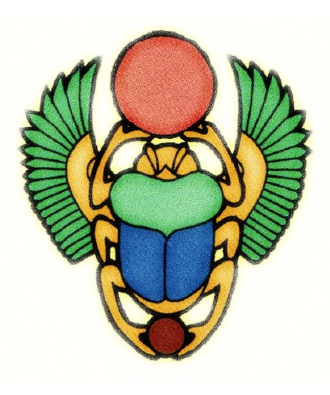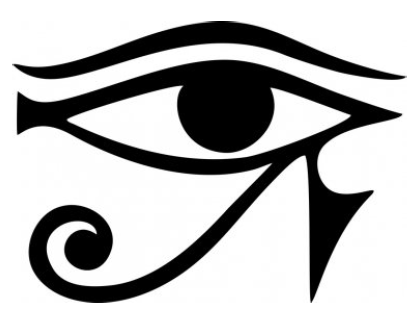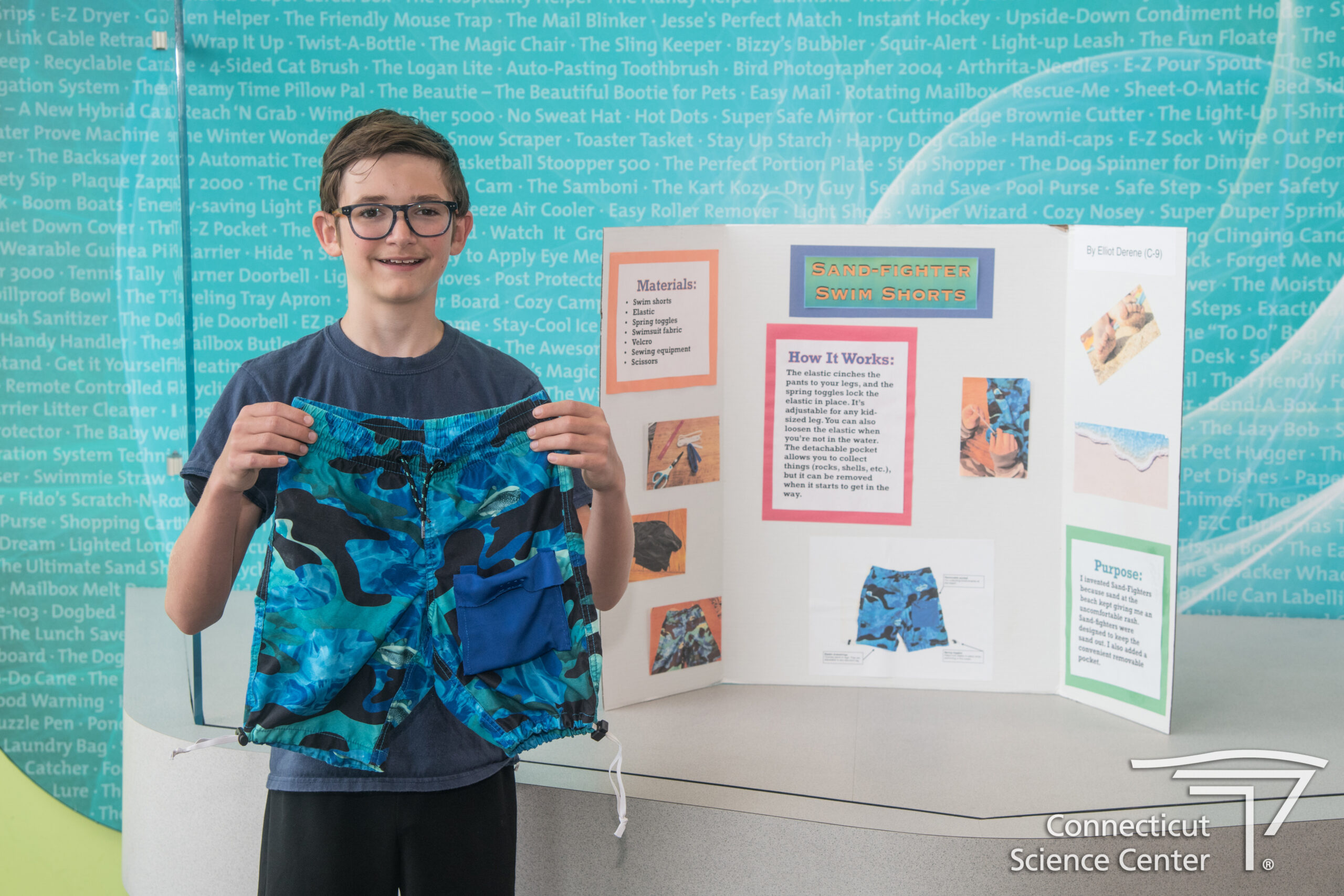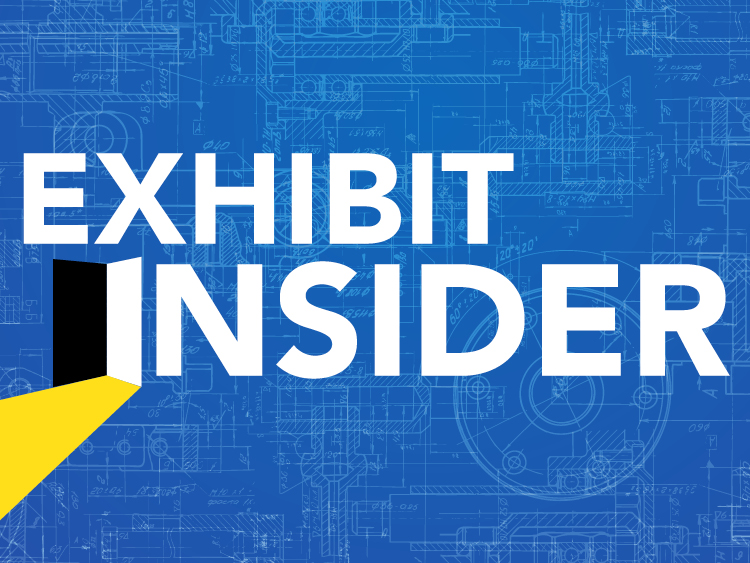As visitors walk through the Egyptian portion of the Mummies of the World exhibit, they often notice the recurrence of certain symbols. The hieroglyphic writing system of ancient Egypt is entirely based on symbols, but there are other symbols that aren’t part of the writing system that carry their own significance. Symbols can be used in various ways or for different purposes. For example, in ancient Egypt they could be worn as a talisman to protect the wearer; the could be part of an ancient Egyptian spell; they could signify devotion to a particular cult or deity, among countless other purposes.
There are certain symbols that are easily spotted in the Mummies of the World exhibit, as they appear in several locations. One of these, possibly among the most famous Egyptian symbols, is the Ankh. In the exhibit, the Ankh can be found in the MUMAB section, both on the mummy and also at his feet.
 The Ankh is a hieroglyphic symbol, with the primary meaning of this symbol is “life” or “eternal life”, but there were some variations of its associations throughout centuries of ancient Egypt. It is very frequently found in burial contexts (on tomb inscriptions, sarcophagi, mummy wrappings, canopic jars, and jewelry), as the ancient Egyptians believed in an afterlife. Although often associated with the mother goddess Isis, the god Anubis is sometimes depicted as placing an ankh on the lips of the deceased to resurrect the soul, while the goddess Ma’at is often shown holding an ankh in each hand. Both gods, Osiris and Ra, are sometimes seen holding an ankh as well.
The Ankh is a hieroglyphic symbol, with the primary meaning of this symbol is “life” or “eternal life”, but there were some variations of its associations throughout centuries of ancient Egypt. It is very frequently found in burial contexts (on tomb inscriptions, sarcophagi, mummy wrappings, canopic jars, and jewelry), as the ancient Egyptians believed in an afterlife. Although often associated with the mother goddess Isis, the god Anubis is sometimes depicted as placing an ankh on the lips of the deceased to resurrect the soul, while the goddess Ma’at is often shown holding an ankh in each hand. Both gods, Osiris and Ra, are sometimes seen holding an ankh as well.
 Another common Egyptian symbol is the scarab, which can be found in the Mummies of the World exhibit on Nes Min’s sarcophagus and there is an amulet on his body as well. Additionally there is a display of various scarab amulets on the wall. Similarly to the Ankh, the scarab symbolized immortality and rebirth. Ancient Egyptians believed that the sun was the source of all life, and was associated with a falcon-headed god named Ra, who traveled through the sky each day. With the rising of the sun, the god had a scarab for his face and was called Khephri. Since he represented the birth of the sun each day, he was also associated with renewal, and thus the scarab came to mean life and rebirth. In nature, a scarab is a beetle (from the family Scarabaeidae) that lays eggs in dung from animals, then rolls it into a ball and moves it to a safe place, where the eggs would hatch. The ancient Egyptians noticed this pattern and believed that the sun moved through the sky because it was being rolled by Kephri, and when it set each night as the god Atum, it was being rolled into the underworld where Ra would battle against chaos. Kephri was born each morning as a winged scarab, bringing light and life to those of Egypt. As a symbol, they first appear in the archaeological record during the later part of the Old Kingdom (c. 2575-c. 2130 BCE), and were used to imbue revitalizing energy to both the living and the dead. They were used very often starting in the Middle Kingdom (1938-c. 1630 BCE), usually made of glazed steatite and often wrapped in the bandages of mummies.
Another common Egyptian symbol is the scarab, which can be found in the Mummies of the World exhibit on Nes Min’s sarcophagus and there is an amulet on his body as well. Additionally there is a display of various scarab amulets on the wall. Similarly to the Ankh, the scarab symbolized immortality and rebirth. Ancient Egyptians believed that the sun was the source of all life, and was associated with a falcon-headed god named Ra, who traveled through the sky each day. With the rising of the sun, the god had a scarab for his face and was called Khephri. Since he represented the birth of the sun each day, he was also associated with renewal, and thus the scarab came to mean life and rebirth. In nature, a scarab is a beetle (from the family Scarabaeidae) that lays eggs in dung from animals, then rolls it into a ball and moves it to a safe place, where the eggs would hatch. The ancient Egyptians noticed this pattern and believed that the sun moved through the sky because it was being rolled by Kephri, and when it set each night as the god Atum, it was being rolled into the underworld where Ra would battle against chaos. Kephri was born each morning as a winged scarab, bringing light and life to those of Egypt. As a symbol, they first appear in the archaeological record during the later part of the Old Kingdom (c. 2575-c. 2130 BCE), and were used to imbue revitalizing energy to both the living and the dead. They were used very often starting in the Middle Kingdom (1938-c. 1630 BCE), usually made of glazed steatite and often wrapped in the bandages of mummies.
 Among the various symbols in the Egyptian portion of the Mummies of the World exhibit are the Eye of Horus and the Eye of Ra, both symbolized by the wedjet symbol that looks like a human eye with a line coming down from the corner, and was used primarily for protection. These symbols can be found on the mummies of Nes Hor and Nes Min, on some ushabtis, and on one of the tools used in the preparation of MUMAB. In later traditions, the right eye was the Eye of Ra and represented the sun and destructive forces, while the left eye was the eye of Horus and represented the moon, healing and wisdom, although there are variations of this system. As jewelry, it was made out of a variety of materials, including lapis lazuli, silver, gold, and carnelian, and would have been worn for its protective powers.
Among the various symbols in the Egyptian portion of the Mummies of the World exhibit are the Eye of Horus and the Eye of Ra, both symbolized by the wedjet symbol that looks like a human eye with a line coming down from the corner, and was used primarily for protection. These symbols can be found on the mummies of Nes Hor and Nes Min, on some ushabtis, and on one of the tools used in the preparation of MUMAB. In later traditions, the right eye was the Eye of Ra and represented the sun and destructive forces, while the left eye was the eye of Horus and represented the moon, healing and wisdom, although there are variations of this system. As jewelry, it was made out of a variety of materials, including lapis lazuli, silver, gold, and carnelian, and would have been worn for its protective powers.
These are just a few examples of the countless symbols that came into use in ancient times and are still in use today. Some cultures had different associations for the same symbol, while others had entirely unique symbols, sometimes with unusual meanings. Can you think of some modern symbols used in your culture today?
Embark on a journey into the extraordinary world of mummies and mummification. Reserve your timed ticket in advance of your visit on CTScienceCenter.org.
Thaea is currently an anthropology student at Central Connecticut State University. Her main interests are in archaeology, specifically of Ireland and the Mediterranean. She has studied many languages and is fluent in Italian and Russian, and conversational in Greek. Her hobbies include training for and racing triathlons (swimming, biking and running), singing opera, and writing and producing music.


